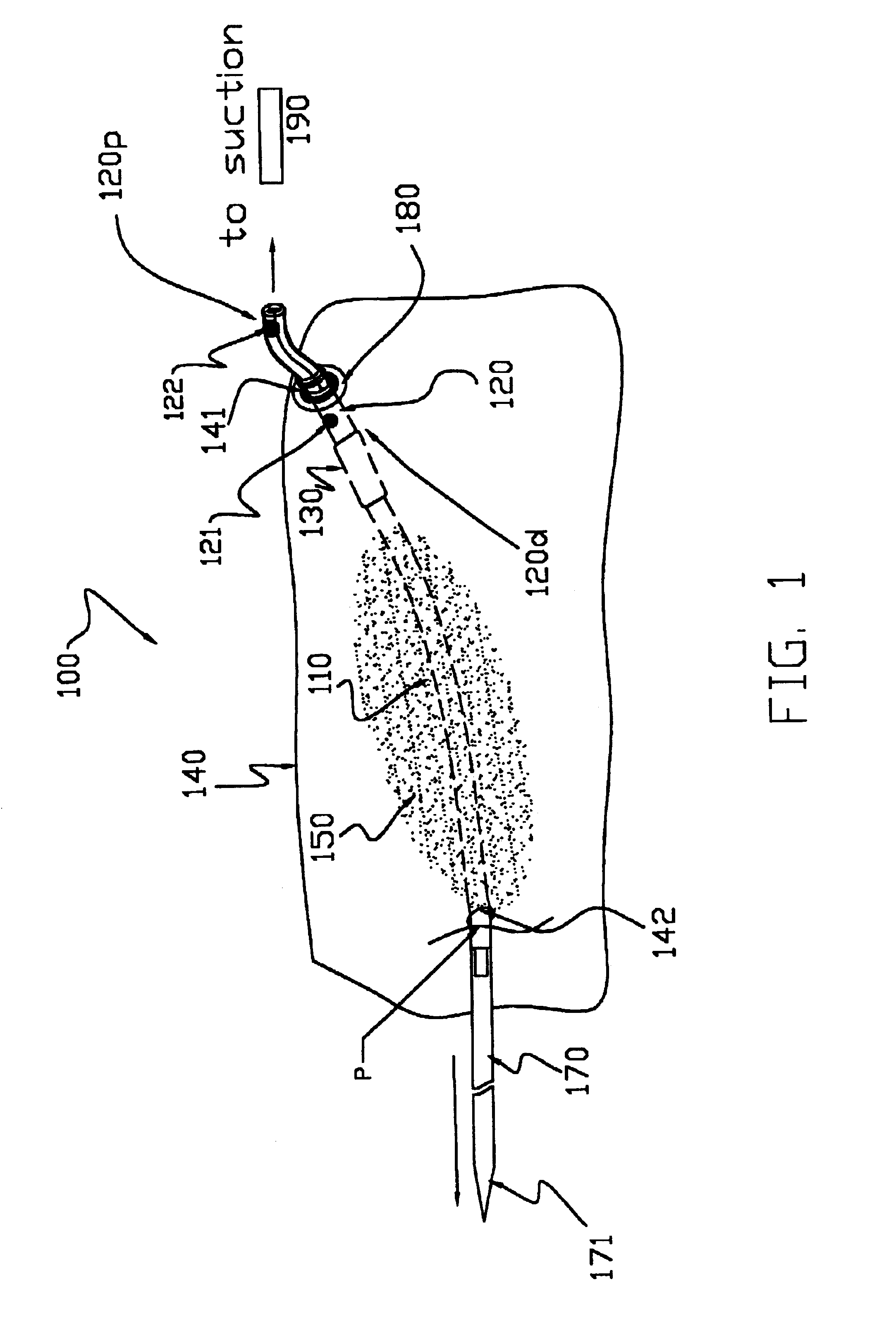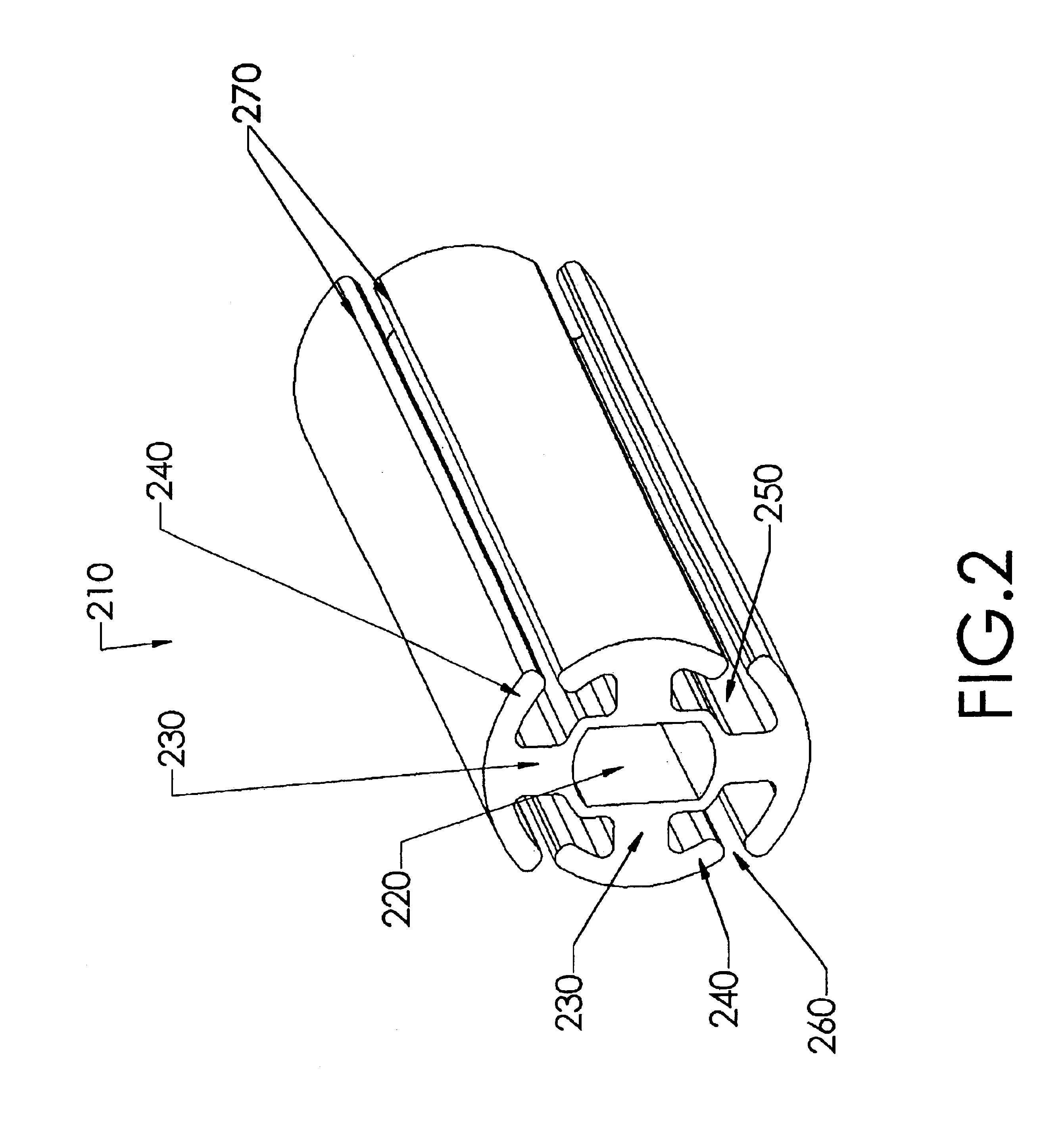Drain catheters
a catheter and lumen technology, applied in catheters, suction devices, intravenous devices, etc., can solve the problems of reducing the effectiveness of the drain, and the patient's body
- Summary
- Abstract
- Description
- Claims
- Application Information
AI Technical Summary
Problems solved by technology
Method used
Image
Examples
Embodiment Construction
[0080]The term “proximal”, as used herein, means that portion of the wound drain catheter, or element thereof, which is in close proximity to the external source of vacuum. Conversely, the term “distal”, as used herein, means that portion of the wound drain catheter, or element thereof, which is furthest from the external source of vacuum.
[0081]The present invention comprises a wound drain catheter for draining fluid from, or supplying medication to, a wound in a patient. The drain of the present invention provides an increased tissue contact drainage area and an increased lumenal flow drainage area compared to prior art drains. Further, the specific configuration of this wound drain catheter provides an increased drain body cross-sectional area and eliminates weak points in the drain body. This configuration makes the wound drain catheter of the present invention stronger than comparably sized drains and therefore less likely to break during removal. Moreover, the present drain con...
PUM
 Login to View More
Login to View More Abstract
Description
Claims
Application Information
 Login to View More
Login to View More - R&D
- Intellectual Property
- Life Sciences
- Materials
- Tech Scout
- Unparalleled Data Quality
- Higher Quality Content
- 60% Fewer Hallucinations
Browse by: Latest US Patents, China's latest patents, Technical Efficacy Thesaurus, Application Domain, Technology Topic, Popular Technical Reports.
© 2025 PatSnap. All rights reserved.Legal|Privacy policy|Modern Slavery Act Transparency Statement|Sitemap|About US| Contact US: help@patsnap.com



